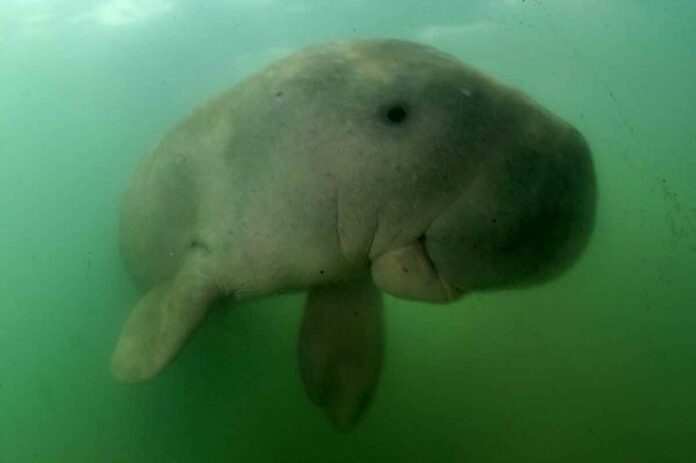According to an official list, dugongs, large herbivorous marine mammals, are now threatened with extinction. These dugongs are commonly known as “sea cows”.
These gentle cousins of the manatee graze on seagrass in shallow coastal waters. They also contribute significantly to ecotourism in their tropical habitats. These animals are related to elephants rather than cows.
Dugong populations in East Africa and New Caledonia have now been classified as “critically endangered” and “endangered” by the IUCN (International Union for Conservation of Nature). Though the species is still considered “vulnerable” globally.
Their primary threats in East Africa are unintentional capture in fishing gear. And in New Caledonia, it is poaching as well as boat injuries.
Fossil fuel exploration, pollution, and unauthorized development are all threatening East Africa’s seagrass food source. Seagrass in New Caledonia is being harmed by agricultural runoff and pollution from nickel mining. Climate change exacerbates habitat degradation throughout the Indian and western Pacific Oceans. The dugongs live there.
The new list comes as delegates from around the world in Montreal for a UN biodiversity conference to finalize a new framework for “a peace pact with nature”. Its key goals are to include the preservation of Earth’s forests, oceans, and species.
Climate change is causing ocean acidification and deoxygenation. Agricultural and industrial pollution from land is also having a significant impact on ocean species. It is affecting the food webs.
Scientists have said that the Red List is not a hopeless catalog of doom. But it is rather a scientifically rigorous tool that aids in the focus of conservation action.
The list contains over 150,000 species. And over 42,000 of them face extinction. Over 1,550 marine animals and plants have been assessed as being threatened by extinction. Climate change affects at least 41% of those threatened.
Climate change, pollution, and poaching
Another IUCN list says, 44 percent of all abalone shellfish are now threatened with extinction. And pillar coral has been upgraded to “critically endangered.”
Abalone species are considered gastronomic delicacies. And international organized crime networks engage in unsustainable extraction and poaching. Abalones are also extremely vulnerable to climate change. A 2011 marine heatwave killed 99 percent of Roe’s abalones off the coast of Western Australia.
Agricultural and pollution run-off also contributes to harmful algal blooms. It has wiped out half of the Omani abalone. It is a commercial species found in the Arabian Peninsula. Twenty of the world’s 54 abalone species are now considered endangered.
Pillar coral is found throughout the Caribbean. It has been upgraded from “vulnerable” to “critically endangered” after its population has declined by more than 80% across the majority of its range since 1990.

